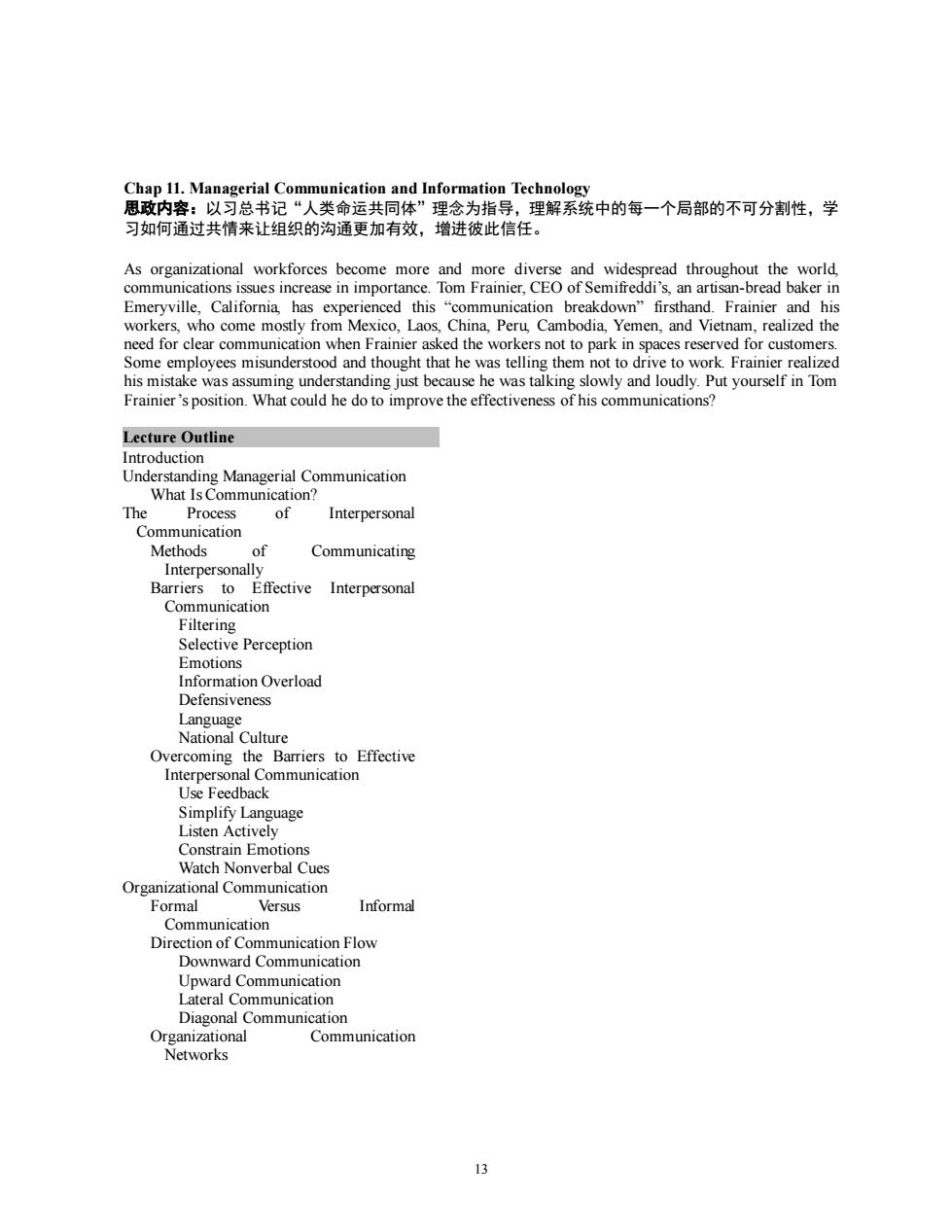正在加载图片...

Chap 11.Managerial Communication and Information Technology 思政内容:以习总书记 人类命运共同体”理 念为指导,理解系统中的每一个局部的不可分割性,学 习如何通过共情来让组织的沟通更加有效,增进彼此信任。 As organi Emervville California has exp ced this "o ommunication breakdown"firsthand.Frainier and his workers,who come mostly from Mexico,Laos,China,Peru Cambodia.Yemen,and Vietnam,realized the need for cle ear communication w r asked the wor ot to park in spaces reserved for customers e to d l Frainier's position.What could he do to improve the effectiveness of his communications? Lecture Outline e Man rial Communication The Process of Interpersonal Cor cation Communicating Barriers to Effective Interpersonal Communication ring Perception Information Overload Defensiveness Overcoming the Barriers to Effective Interperso nal Communication Use F rain Emotions Watch Nonverbal Cues Direction of Communication Flow Downward Communication Organizational Communication Networks 13 13 Chap 11. Managerial Communication and Information Technology 思政内容:以习总书记“人类命运共同体”理念为指导,理解系统中的每一个局部的不可分割性,学 习如何通过共情来让组织的沟通更加有效,增进彼此信任。 As organizational workforces become more and more diverse and widespread throughout the world, communications issues increase in importance. Tom Frainier, CEO of Semifreddi’s, an artisan-bread baker in Emeryville, California, has experienced this “communication breakdown” firsthand. Frainier and his workers, who come mostly from Mexico, Laos, China, Peru, Cambodia, Yemen, and Vietnam, realized the need for clear communication when Frainier asked the workers not to park in spaces reserved for customers. Some employees misunderstood and thought that he was telling them not to drive to work. Frainier realized his mistake was assuming understanding just because he was talking slowly and loudly. Put yourself in Tom Frainier’s position. What could he do to improve the effectiveness of his communications? Lecture Outline Introduction Understanding Managerial Communication What Is Communication? The Process of Interpersonal Communication Methods of Communicating Interpersonally Barriers to Effective Interpersonal Communication Filtering Selective Perception Emotions Information Overload Defensiveness Language National Culture Overcoming the Barriers to Effective Interpersonal Communication Use Feedback Simplify Language Listen Actively Constrain Emotions Watch Nonverbal Cues Organizational Communication Formal Versus Informal Communication Direction of Communication Flow Downward Communication Upward Communication Lateral Communication Diagonal Communication Organizational Communication Networks